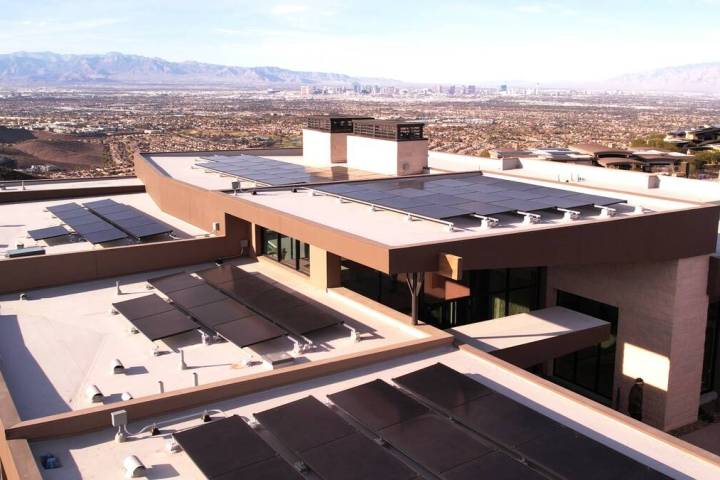


A national housing expert said Las Vegas is well-positioned by its job growth and migration patterns, but the high cost of new homes in comparison to existing ones will put a damper on sales, especially for first-time and move-up homebuyers.
Tim Sullivan, managing principal of Beverly Hill-based Meyers Research, said the job growth in Las Vegas has been good as it has been throughout the West. That, along with growing consumer and small business owner confidence, bodes well for continued economic growth and the willingness of people to buy homes.
“Consumers are confident and feeling good about buying a home, buying a car and spending money coming to Las Vegas for the weekend and having a great time,” Sullivan said. “The good news is consumer confidence is at record levels we haven’t seen in 15 years. And that’s very good news. If the consumer is happy, they spend money, GDP goes up, and we see job growth.”
Sullivan said the potential for interest rates rising too much too fast remains a concern in addition to what happens in Washington, D.C., with economic policies and politics.
“We don’t know which way the policies will go, and that’s one of the things that keeps me up at night,” Sullivan said about tax cuts and other policies.
Nationally, new home sales are up 6 percent in 2017, and Sullivan said sales could be 10 percent higher this year. In comparison, Home Builders Research report new home sales in Las Vegas could increase 7 to 8 percent in 2017 and 5 to 7 percent in 2018.
“There’s a lot of unmet demand,” Sullivan said of the Las Vegas housing market. “But we’re being held back by labor, land and cost.”
New home prices in Las Vegas are on track to surpass the record of $337,000 and rise as much as 8 percent in 2017 and rise another 5 to 7 percent in 2018, according to Home Builders Research.
“If we look locally, there’s difficulty in securing labor and increasing cost of construction and the lack of available land for development,” Sullivan said. “All of these factors will compress supply and unfortunately increase prices. And as we look at the next year, we’re still pretty positive about price appreciation.”
Sullivan said people who don’t live in Las Vegas or aren’t familiar with the valley will drive around and think there’s no problem with the supply of land. The concern is most of the land is owned by the federal government and not available for development at this time, he said.
The Las Vegas monthly new home sales rate of 2.89 homes per subdivision is higher than the national average of 2.15 and slightly below the 2.97 homes sold in Phoenix, Sullivan said.
That’s good, but what’s also holding back additional new home sales in Las Vegas is the disparity of prices when compared to existing homes, Sullivan said. The new home prices are 42 percent higher than existing median prices. The median price of a new home is $323,274 vs. $227,722 for an existing home. In Phoenix, it’s 32 percent higher. In 2006, it was a 15 percent higher in Las Vegas, he said.
“The resale market is a real competitor, and that 42 percent is a concern,” Sullivan said. “The further away that we’re in that price differential and the more segments in the resale market that satisfies that demand that’s fewer that new home builders can satisfy. Our entry-level and first move-up buyers are primarily in the resale market now.”
Las Vegas has 67 percent of its housing permits for single-family homes compared to 66 percent for Phoenix. It’s 49 percent for Denver and under 30 percent for markets such as Los Angeles and San Diego, Sullivan said.
“We can adapt with attached product and smaller lots,” Sullivan said. “It’s a danger zone that makes it more difficult to compete when we have to go against those much lower-priced old homes.”
Sullivan said it’s amazing what has happened to the housing market over the past two decades with the boom and bust and now a recovery. Despite the country adding 63 million people since 1993, there’s a similar number of housing permits issued today than back then.
Some analysts blame millennials, in part, and Sullivan said builders shouldn’t believe pundits who say millennials would rather rent and aren’t interested in buying new homes. He said markets such as Dallas, Houston, Austin and cities in Florida and California have had success building for millennials.
“The sheer number of people added flies in the face of why we didn’t add any permits,” Sullivan said. “Millennials will buy a home if they can find something they can afford, and they think it’s cool. But the key is they don’t want a box on the outskirts. They’ll move to the outskirts if there’s something cool that’s been created there.”
The Federal Reserve has hiked interest rates, but it hasn’t had any impact on sales so far, Sullivan said. That could change if rates rise as much as one-half percent in a short period of time, he said.
The monthly payment on a $323,274 home with a 4 percent interest rate is $1,235 a month, Sullivan said. That would increase by $154 a month if rates rose to 5 percent.
That’s not a lot of money but it’s something builders need to be aware of, Sullivan said. Too big of an increase would prompt buyers to look for smaller homes, he said.
“If interest rates go up they would adjust their expectations in home size, and instead of 2,500 square feet would look at 2,400 or 2,350 and so on,” Sullivan said.
Some 35 to 36 percent of Las Vegas households can afford a home today, Sullivan said. That’s much better than the 12 percent in 2007 and 4 percent in San Diego today.
“We’ve got to watch that trend,” Sullivan said. “It’s not as alarming as it could be, but we have a lot of people from outside of Las Vegas who bring in equity. That could be throwing off the affordability comparison.”
Despite any problems, Las Vegas has some advantages going forward because new home prices are less than half what they are in San Diego, Sullivan said. Lower prices will help make Las Vegas more attractive for people who want to relocate here with no state income tax, he said.






